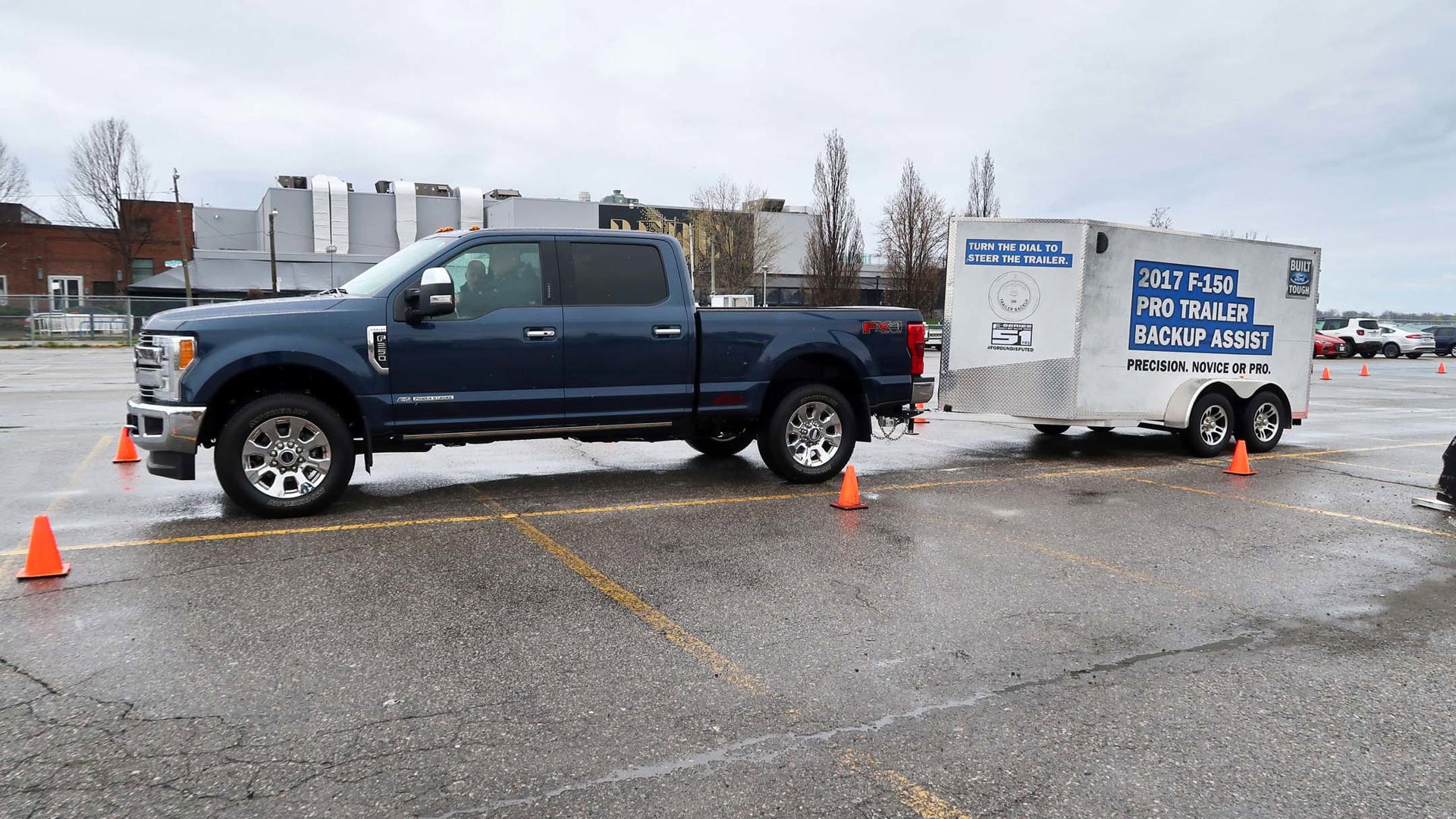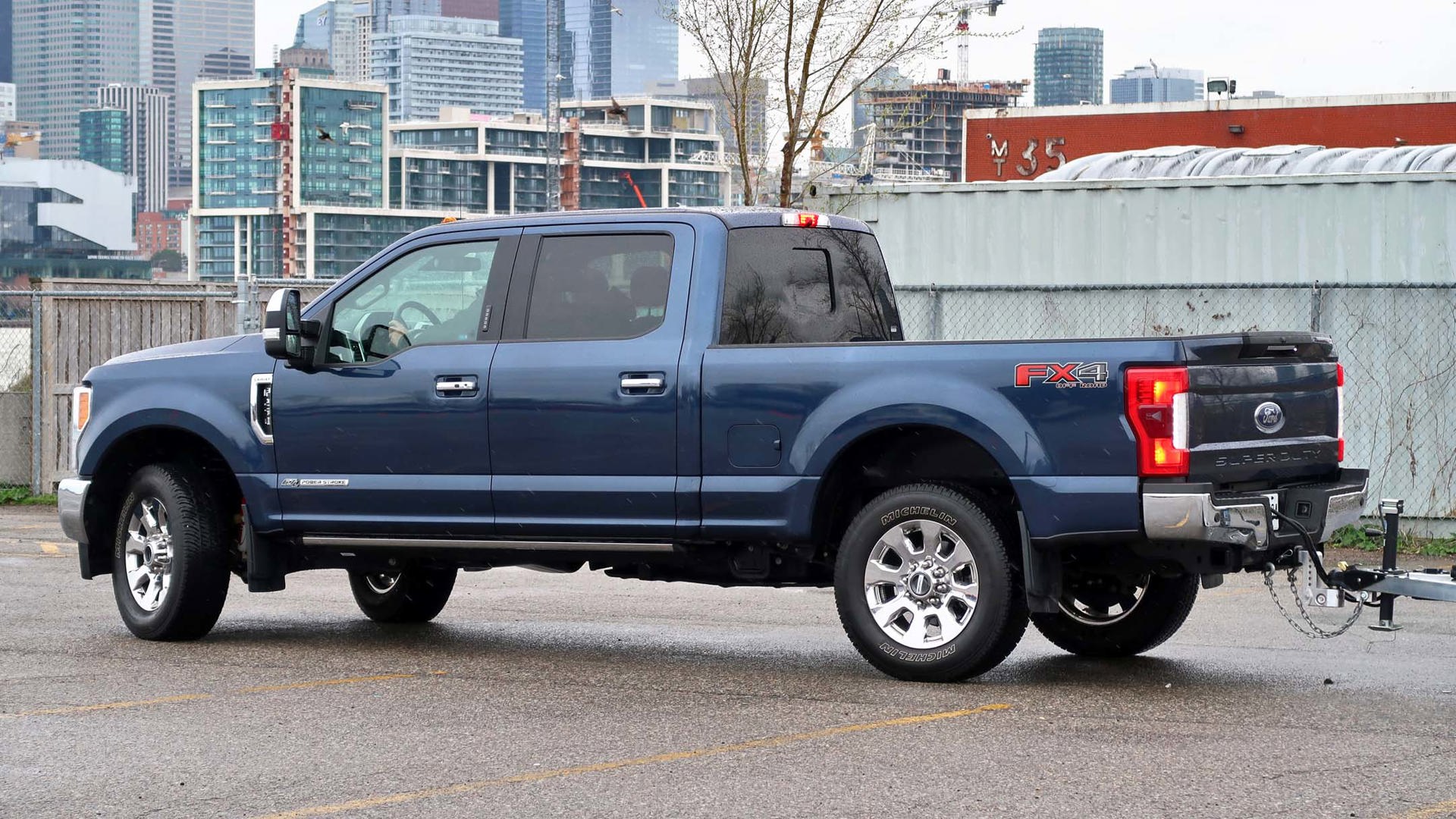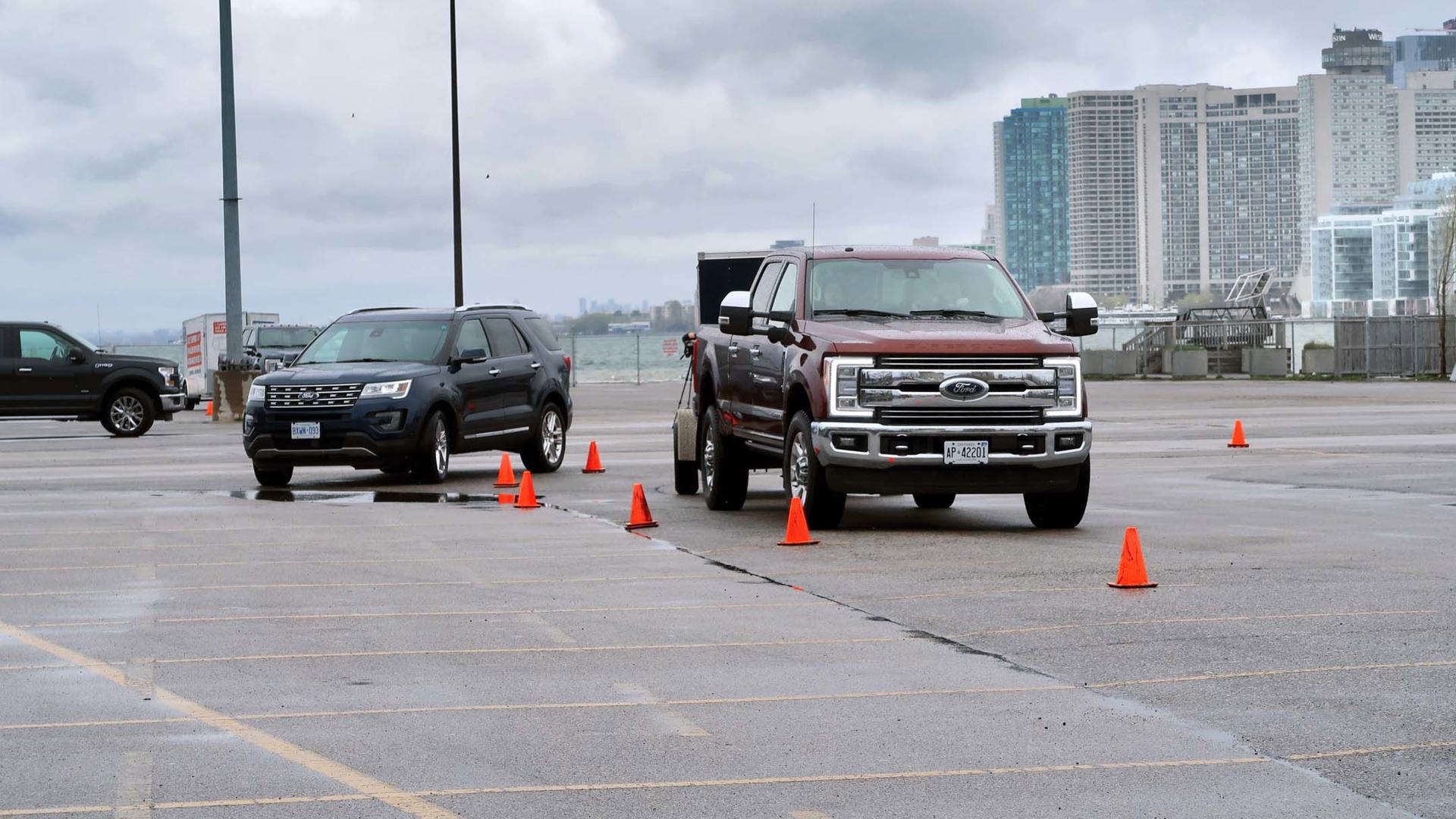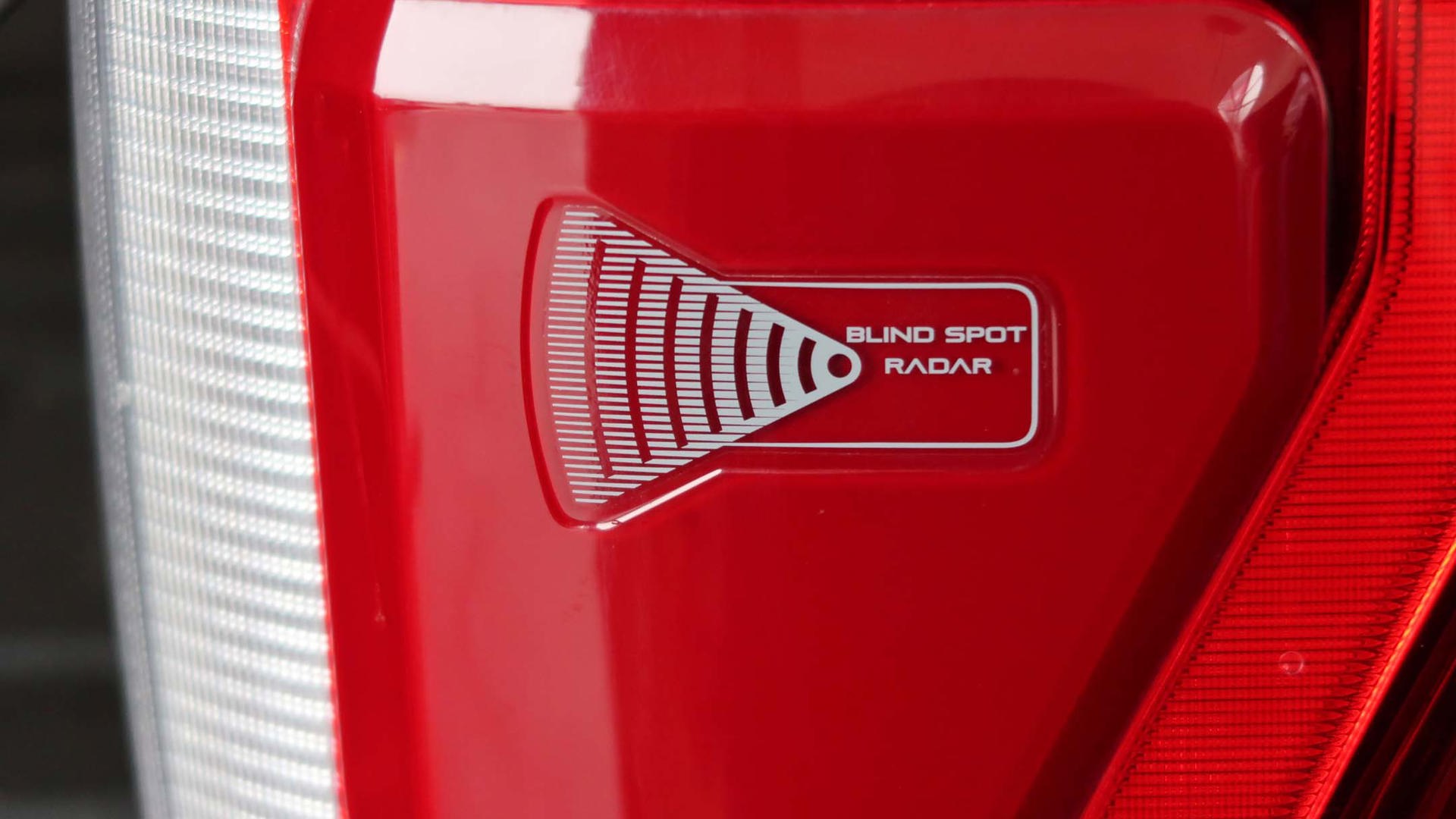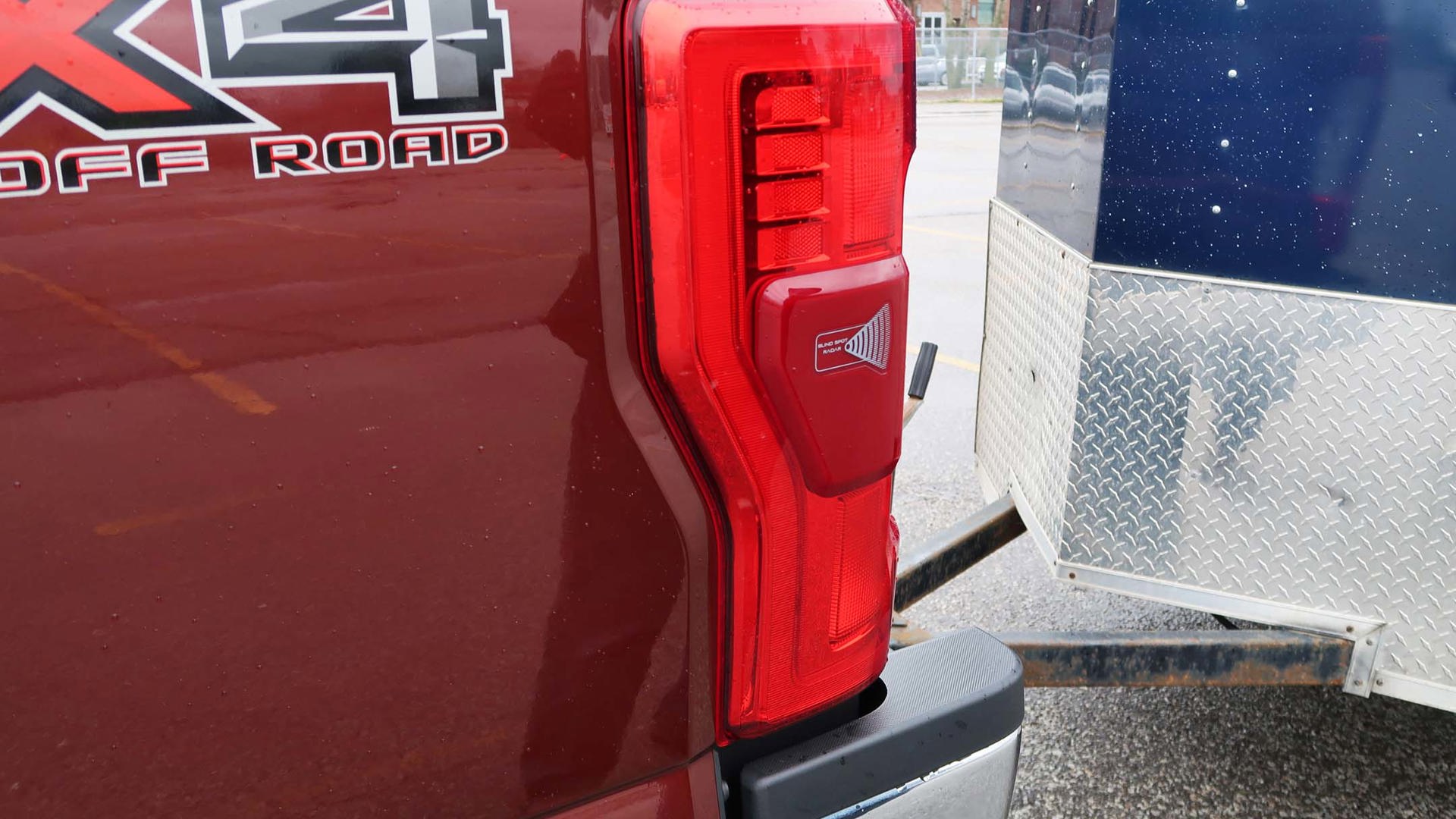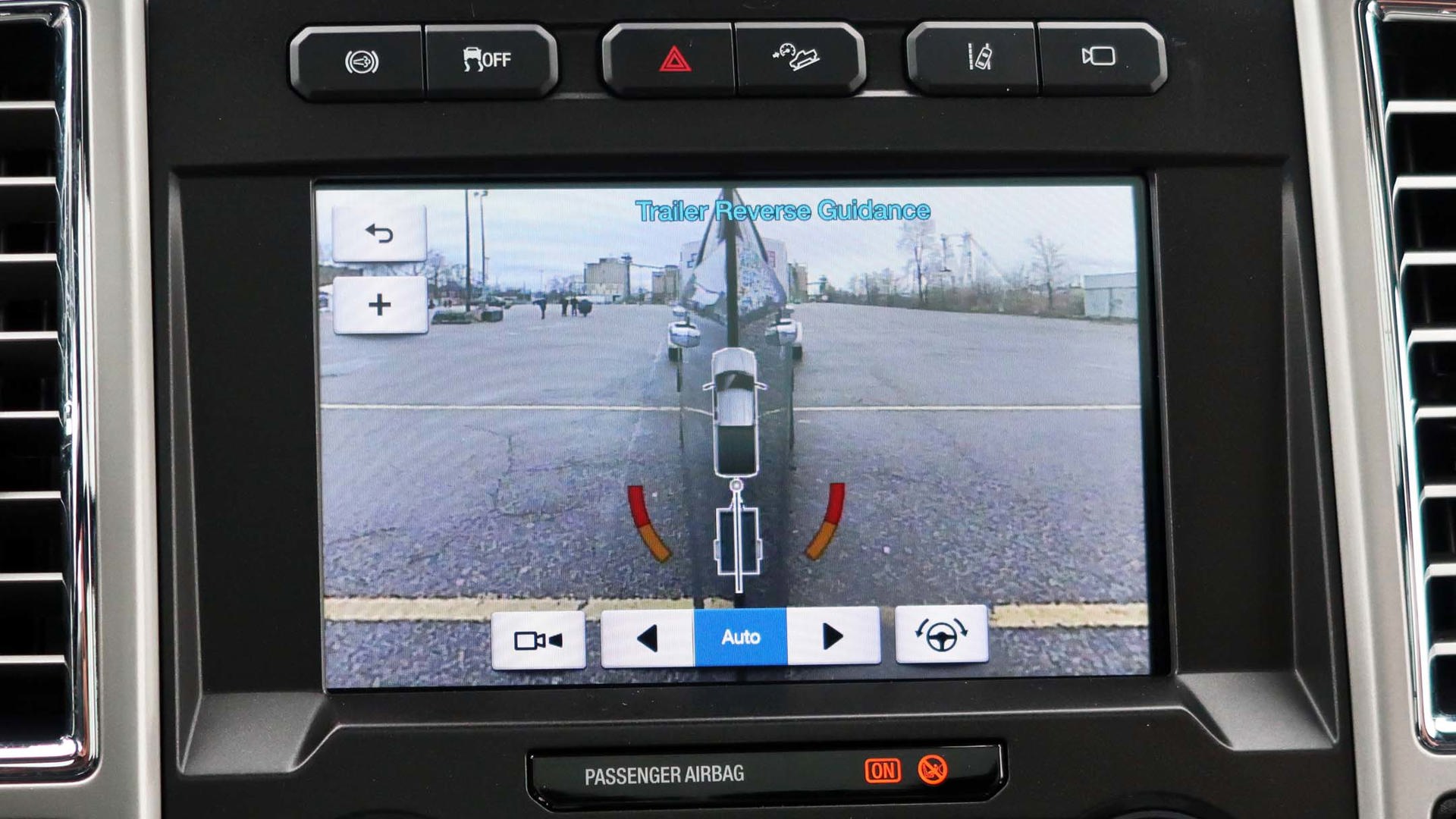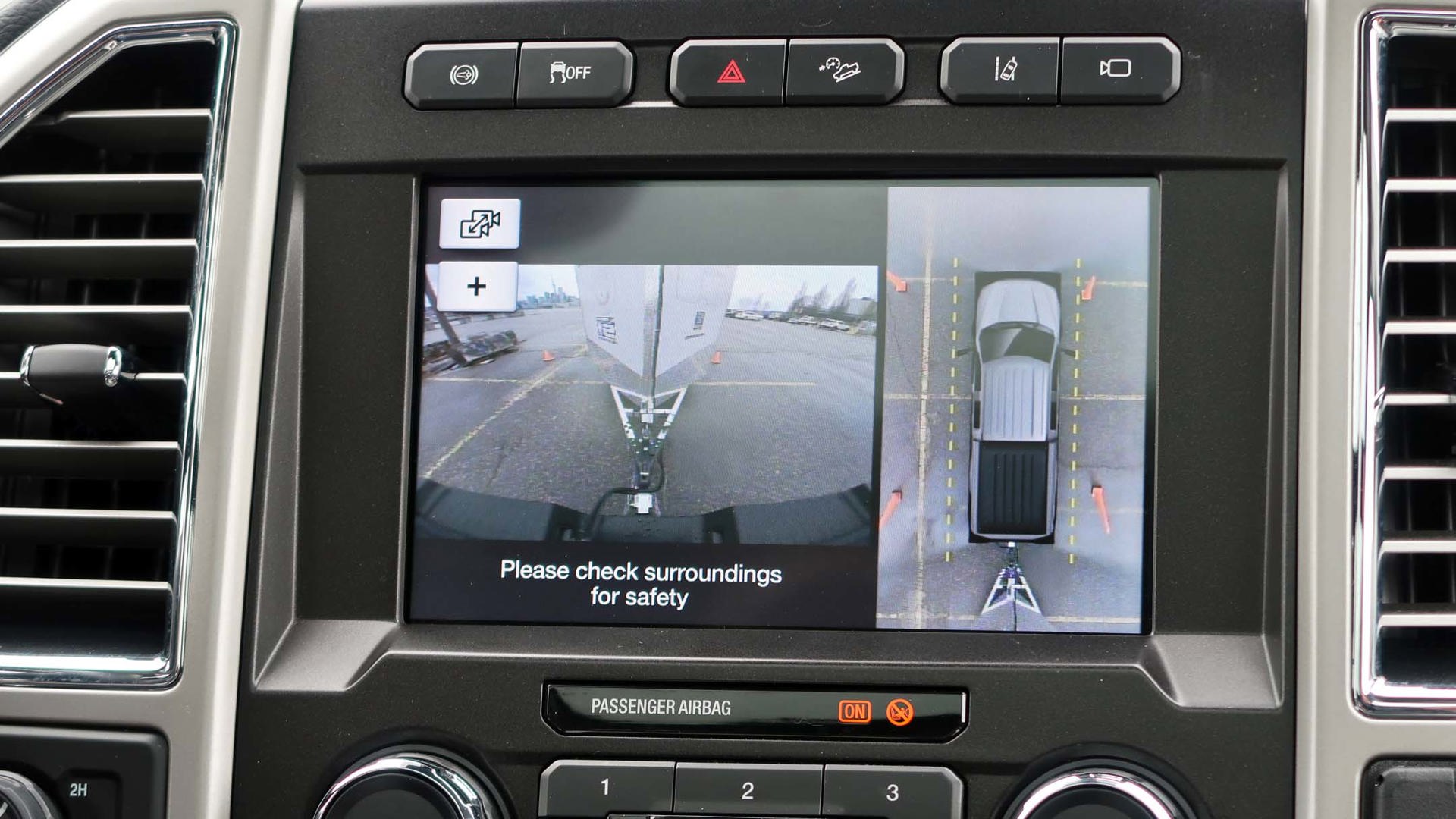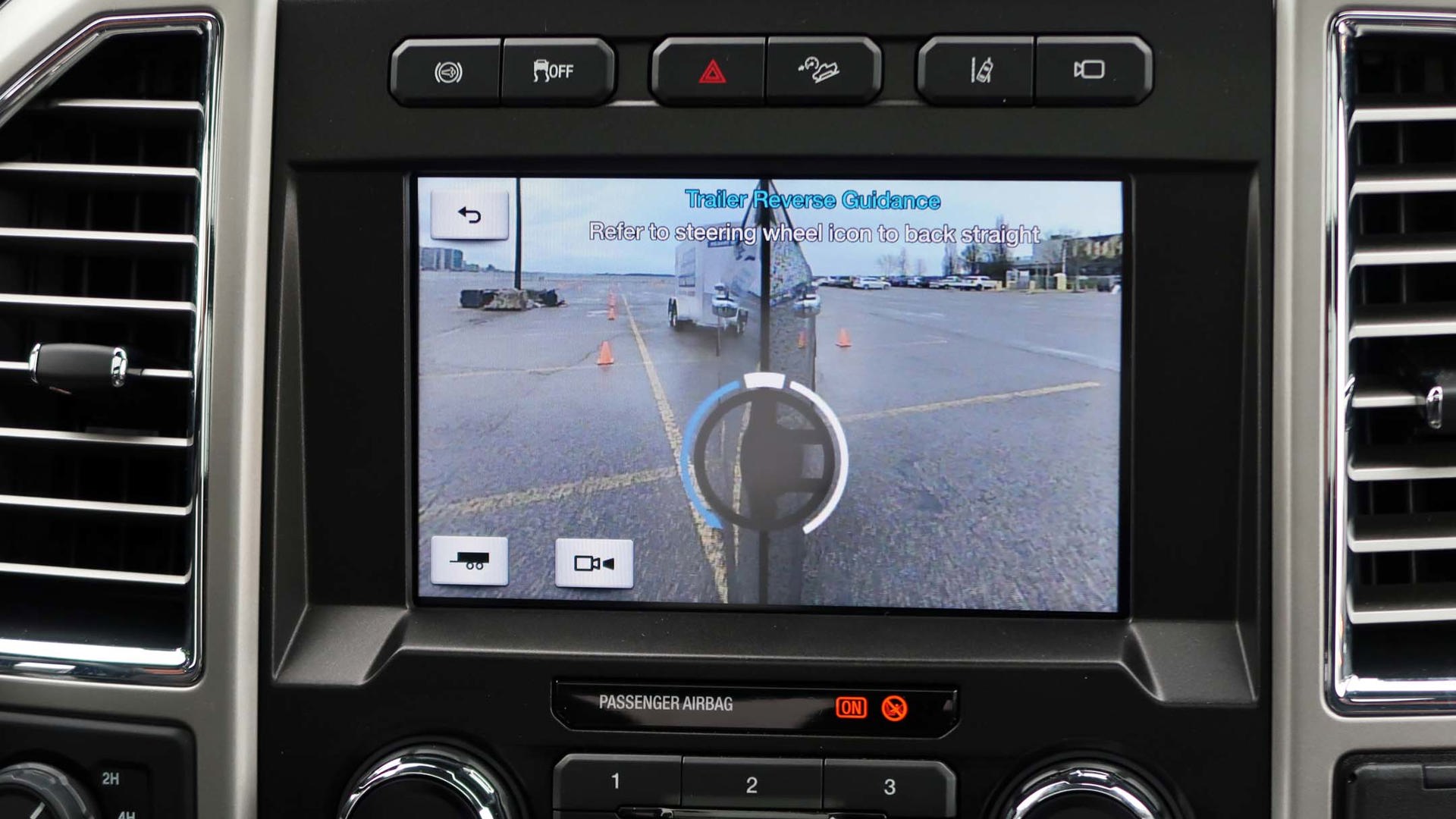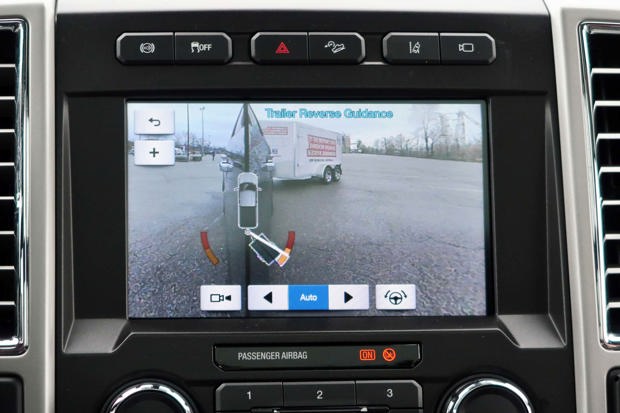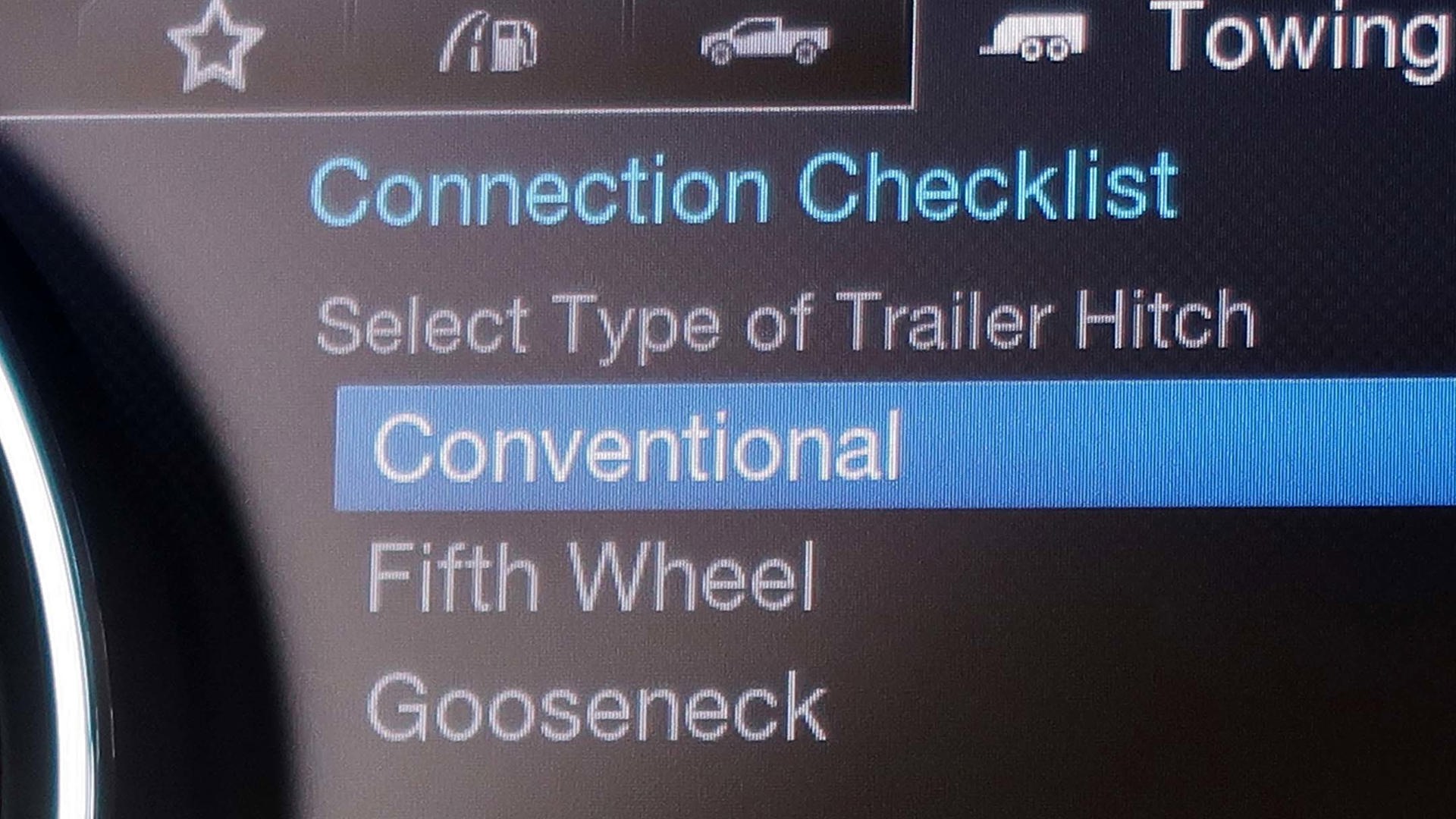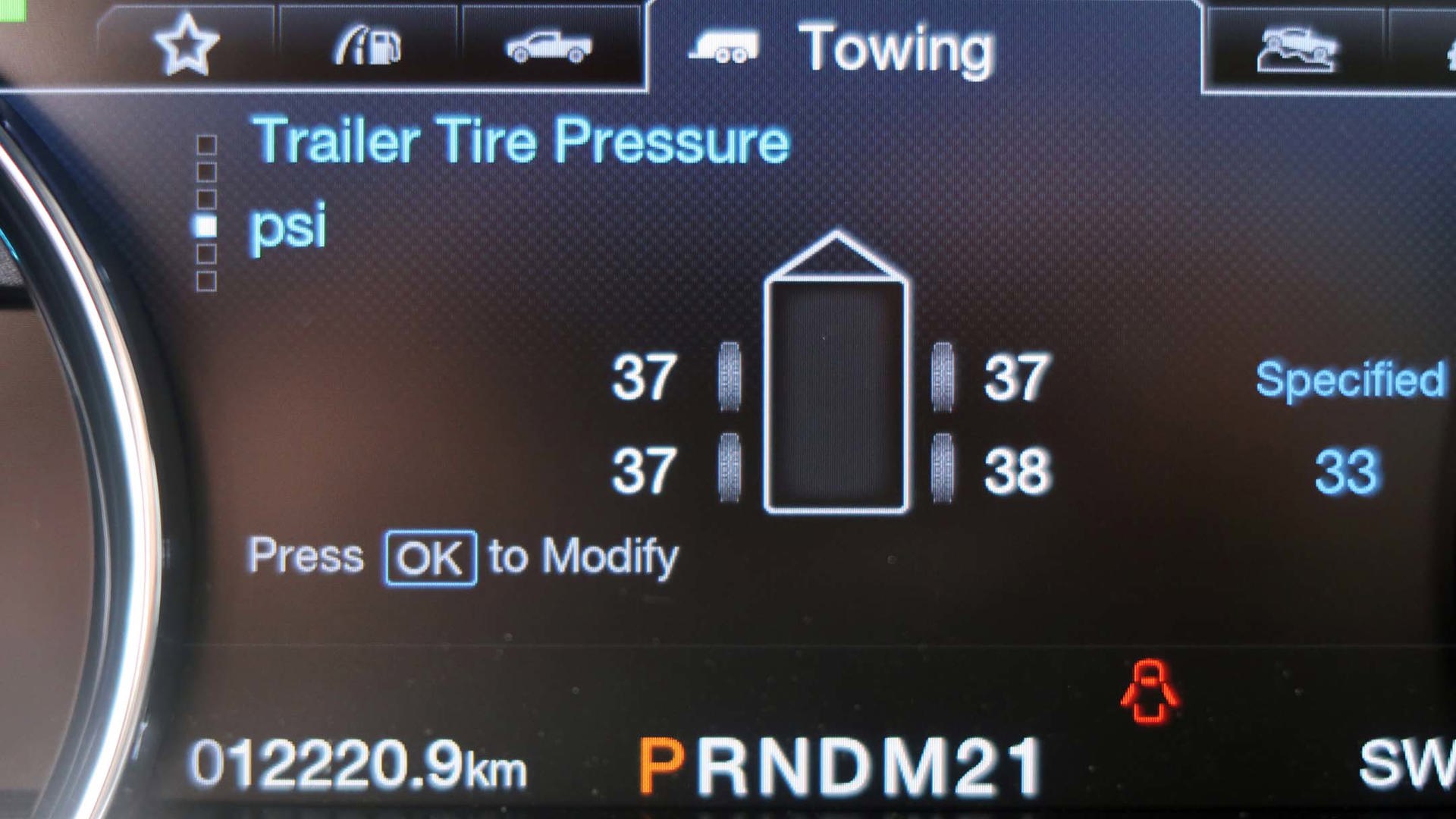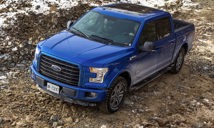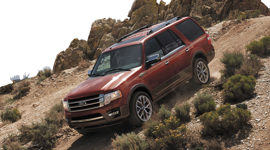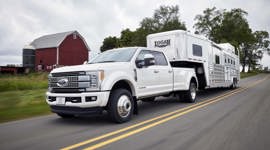TORONTO – Let’s face it: no one makes a bad truck anymore. And with everyone turning out good ones, automakers are adding new features and technologies to differentiate their vehicles.
Ford gathered a group of auto writers to check out the towing technologies added to its Super Duty, which morphs into an all-new generation for 2017. These include as many as seven cameras to watch what the truck and trailer are doing, and a blind-spot-monitoring system that includes not just the truck, but the trailer as well. Ford says both of these are class-exclusive features.
The big news for the half-ton 2017 Ford F-150 was the addition of Pro Trailer Back-Up Assist. It uses a knob on the dash that you turn in the direction you want the trailer to go, and the truck automatically steers – no hands on the wheel – to get it there. It basically mimics the trick of holding the steering wheel at the bottom and turning in the desired direction, offsetting the potential confusion of dealing with a trailer that goes in the opposite way of how you’d normally back up. (It can only do so much, of course, you still have to know where to initially position the truck and trailer before backing into a driveway, for example.)
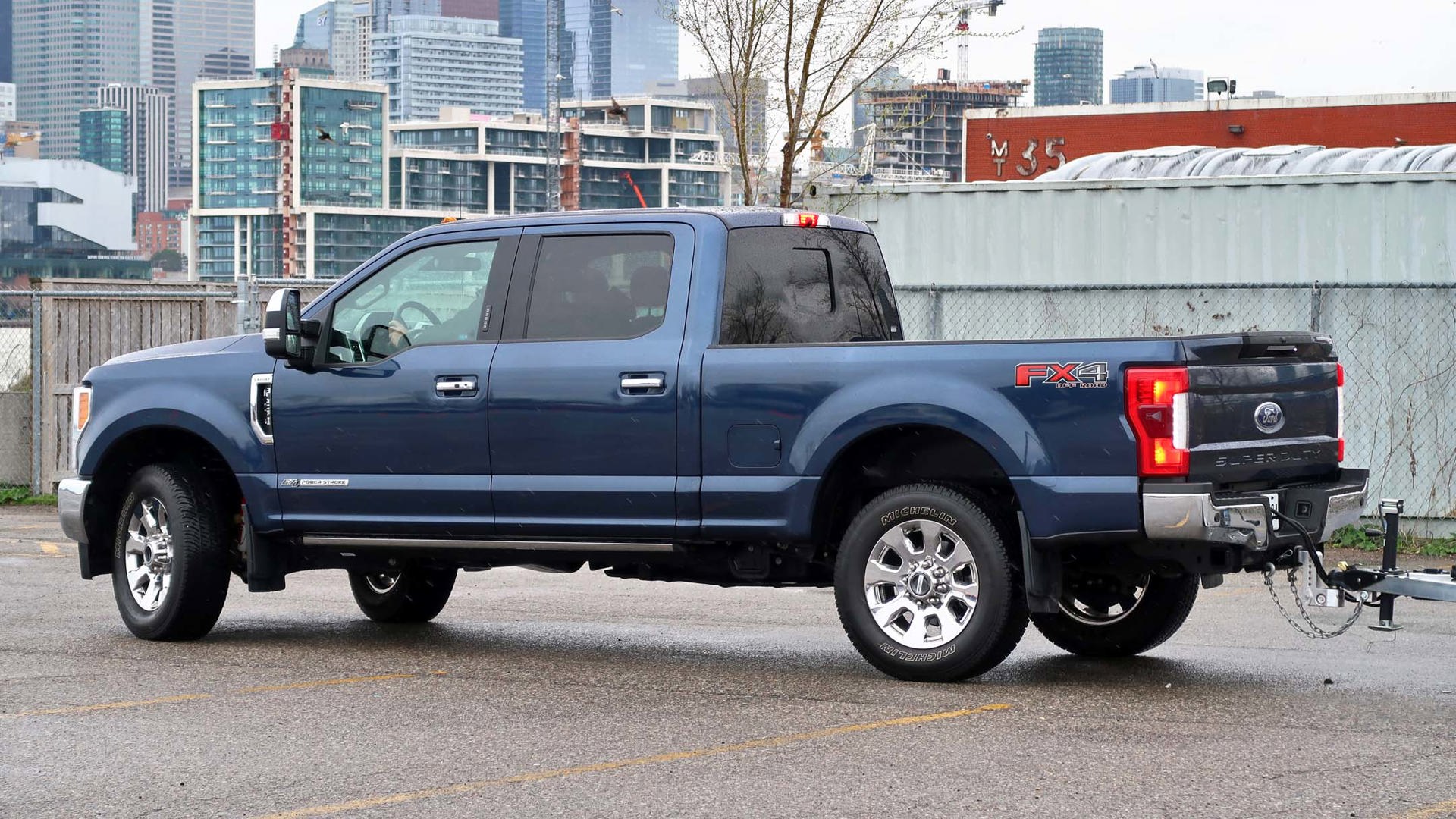
The Super Duty doesn’t have that feature for two reasons, the first being that it’s mechanically impossible. The F-150 uses electric power steering, which the system can spin around on its own with a small motor, while the Super Duty has hydraulic steering that requires the driver to move the wheel.
But secondly, as Ford points out, most F-150 customers tow only occasionally, such as taking a boat to the cottage, while most Super Duty customers buy theirs for work and are experienced towers who often hook up daily. They don’t need the system to do it for them, and instead, they’re just getting some extra assistance.
The first demonstration was of the Trailer Reverse Guidance option. The Super Duty can be outfitted with up to seven cameras, six of which can be used to help with trailering (the seventh is for lane-keeping assist). The system is useful even before the trailer is hooked up, as the view in the infotainment system can show the trailer ball and help the driver to position the truck’s hitch over it. Another camera mounted above the rear window, beside the third brake light, can be selected to show the bed when positioning under a gooseneck or fifth-wheel trailer, including guidance lines on the screen.
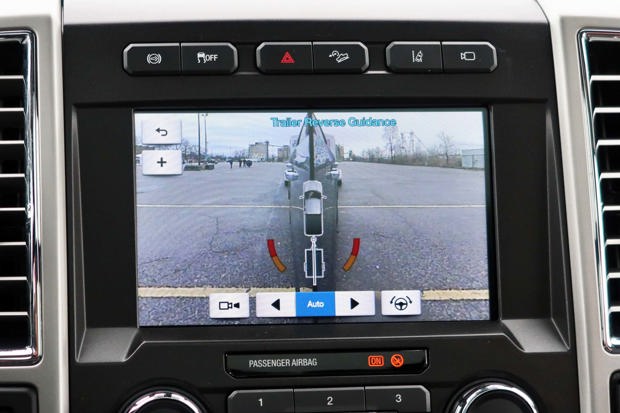
The cameras squeeze the trailer in the photo to show both sides
The driver uses the touchscreen to toggle between the camera views. In reverse guidance, the system “squeezes” the trailer to a thin slit, providing a wider view on either side of it.
There’s also an available camera that can be mounted on the rear of the trailer, giving a view behind everything you’re backing up. It requires a wire running from the camera to a connector that goes into the truck’s trailer connection. A wireless camera would have been more convenient, but that would have also required a battery in the camera. That raised issues of battery life, especially in extreme temperature conditions, and so Ford decided to stick with the wire.
Finally, two functions in the camera system provide more assistance than just showing the view. A special checkerboard sticker has to be attached to the trailer tongue, and once it’s there, the system uses software to track the sticker and analyze the trailer’s movement. When the driver is backing up in a straight line – which can be surprisingly tough to do with a trailer – an icon appears showing the steering wheel angle. If the trailer starts to twist out, the icon indicates which way to turn the wheel to bring it back.
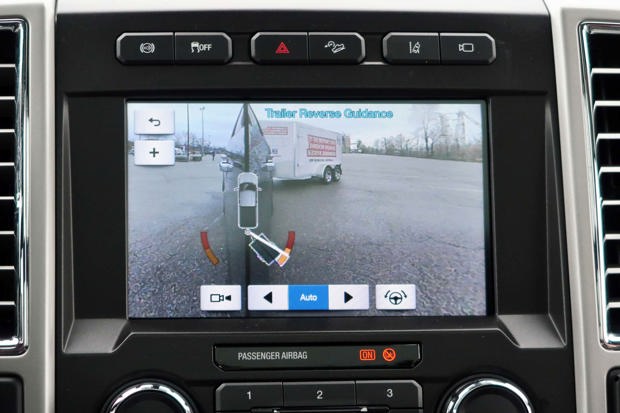 The system warns if the angle is too sharp
The system warns if the angle is too sharp
And if the driver does turn too far, there’s a risk of the dreaded jackknife, when the angle is so sharp there’s a risk of banging the truck bumper into the trailer. An icon appears, along with yellow and red warning lines. Once the trailer moves into the warning area, the system also automatically switches its viewpoint, providing more coverage of the side that’s in trouble.
With jackknife averted, it was time to go over to the blind-spot monitoring demonstration. Virtually every automaker offers some sort of warning system when another vehicle is alongside, but Ford says it’s the first to include whatever’s being pulled behind the truck as well.
It requires a quick setup, through the instrument cluster, where you enter the trailer’s approximate length. The system then calculates the length of truck and trailer. The blind-spot monitoring works as it normally does, using a camera to detect when another vehicle is alongside, but software automatically adds the trailer’s length and flashes a warning when another vehicle enters that space.
The Super Duty’s memory can store up to ten trailers, including each one’s length and a running total of its accumulated mileage, providing you call up the correct one once you hitch it up. If the trailer’s wheels are equipped with compatible sensors, the truck’s tire-pressure-monitoring system (TPMS) can also keep an eye not just on the truck’s tires, but on the trailer’s as well. In this very competitive segment, Ford’s hoping this electronic wizardry will give it an edge in the daily haul.
